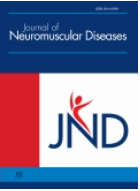 Spinal Muscular Atrophy (SMA), an autosomal recessive neurodegenerative disease characterized by the loss of spinal-cord motor-neurons, is caused by mutations on Survival-of-Motor Neuron (SMN)-1 gene. The expression of SMN2, a SMN1 gene copy, partially compensates for SMN1 disruption due to exon-7 excision in 90% of transcripts subsequently explaining the strong clinical heterogeneity. Several alterations in energy metabolism, like glucose intolerance and hyperlipidemia, have been reported in SMA at both systemic and cellular level, prompting questions about the potential role of energy homeostasis and/or production involvement in disease progression.
Spinal Muscular Atrophy (SMA), an autosomal recessive neurodegenerative disease characterized by the loss of spinal-cord motor-neurons, is caused by mutations on Survival-of-Motor Neuron (SMN)-1 gene. The expression of SMN2, a SMN1 gene copy, partially compensates for SMN1 disruption due to exon-7 excision in 90% of transcripts subsequently explaining the strong clinical heterogeneity. Several alterations in energy metabolism, like glucose intolerance and hyperlipidemia, have been reported in SMA at both systemic and cellular level, prompting questions about the potential role of energy homeostasis and/or production involvement in disease progression.
In this context, the authors have recently reported the tolerance of mild SMA-like mice (SmnΔ7/Δ7; huSMN2 +/+) to 10 months of low-intensity running or high-intensity swimming exercise programs, respectively involving aerobic and a mix aerobic/anaerobic muscular metabolic pathways. Here, the researchers investigated whether those exercise-induced benefits were associated with an improvement in metabolic status in mild SMA-like mice.
They showed that untrained SMA-like mice exhibited a dysregulation of lipid metabolism with an enhancement of lipogenesis and adipocyte deposits when compared to control mice.
Moreover, they displayed a high oxygen consumption and energy expenditure through β-oxidation increase yet for the same levels of spontaneous activity.
Interestingly, both exercises significantly improved lipid metabolism and glucose homeostasis in SMA-like mice, and enhanced oxygen consumption efficiency with the maintenance of a high oxygen consumption for higher levels of spontaneous activity.
Surprisingly, more significant effects were obtained with the high-intensity swimming protocol with the maintenance of high lipid oxidation.
Finally, when combining electron microscopy, respiratory chain complexes expression and enzymatic activity measurements in muscle mitochondria, the authors found that
- a muscle-specific decreased in enzymatic activity of respiratory chain I, II, and IV complexes for equal amount of mitochondria and complexes expression and
- a significant decline in mitochondrial maximal oxygen consumption, were reduced by both exercise programs.
Most of the beneficial effects were obtained with the high-intensity swimming protocol. Taking together, these data support the hypothesis that active physical exercise, including high-intensity protocols, induces metabolic adaptations at both systemic and cellular levels, providing further evidence for its use in association with SMN-overexpressing therapies, in the long-term care of SMA patients.
